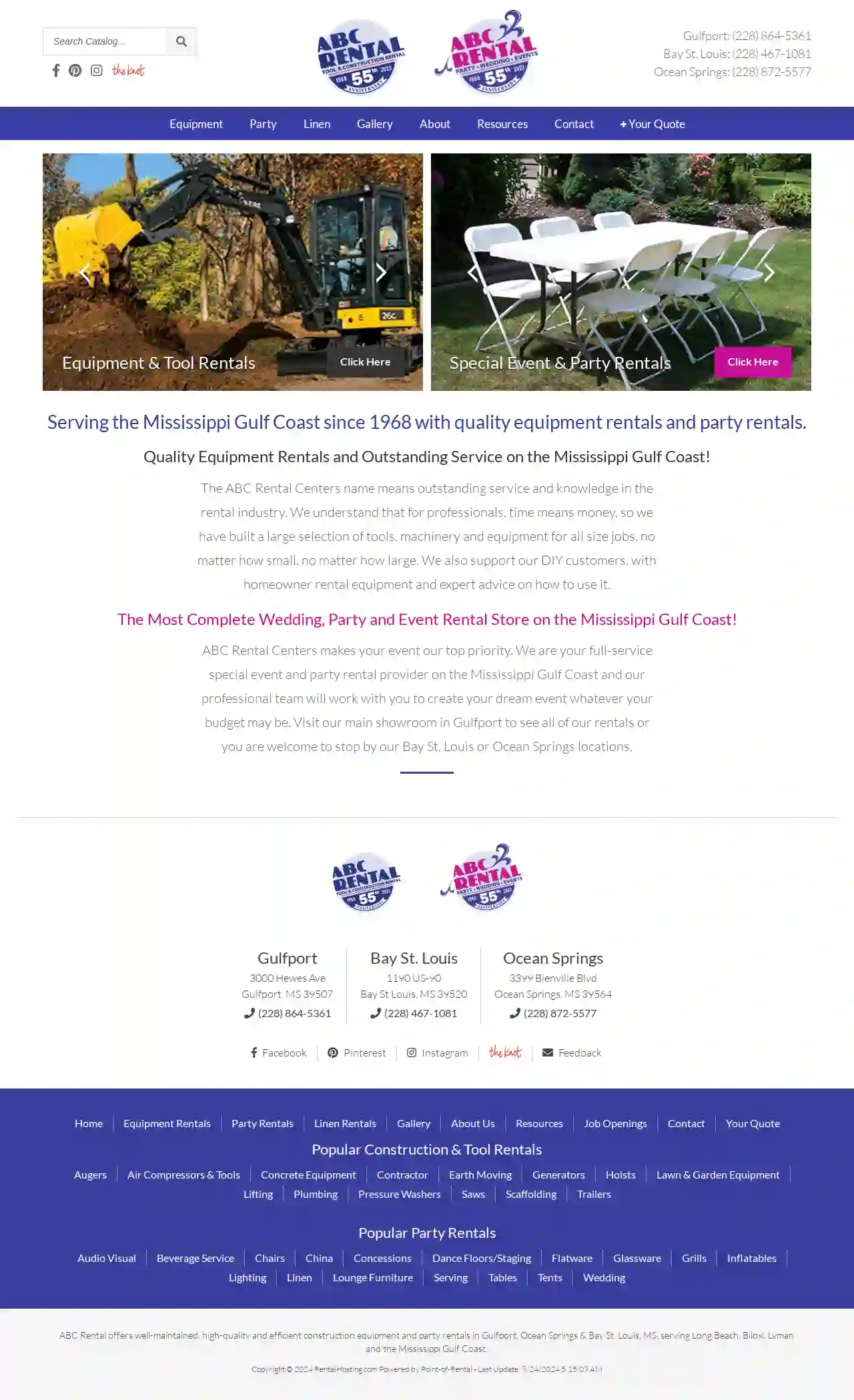Scaffolding Rental Philadelphia
Best Temporary Scaffolding in Philadelphia
Receive multiple Scaffolding Hire quotes for your project today! Compare profiles, reviews, accreditations, portfolio, etc... and choose the best offer.
Service Needed
City or Town

ABC Rental Center
4.4151 reviews3000 Hewes Ave, Gulfport, 39507, USABC Rental offers well-maintained, high-quality and efficient construction equipment and party rentals in Gulfport, Ocean Springs & Bay St. Louis, MS, serving Long Beach, Biloxi, Lyman and the Mississippi Gulf Coast. With a wide range of equipment and party rentals, ABC Rental is dedicated to providing outstanding service and knowledge in the rental industry.
- Services
- Why Us?
- Gallery
Get Quote- Ma
Magnolia Masonry of South Mississippi LLC
4.914 reviewsGulfport, US- Services
- Why Us?
Get Quote - Lo
Lowe's Home Improvement
4.1Gulfport, US- Services
- Why Us?
Get Quote - Cr
Crom Equipment Rentals Inc
Gulfport, US- Services
- Why Us?
Get Quote - Th
The Home Depot
4.2Gulfport, US- Services
- Why Us?
Get Quote
Over 2,353+ Scaffolding Businesses in our network
Our scaffolding contractors operate in Philadelphia and surroundings!
ScaffoldingHQ has curated and vetted the Best Scaffolding Companies in Philadelphia. Find a top & trustworthy contractor today.
Frequently Asked Questions About Scaffolding Rental
Get answers to common questions about scaffolding rentals and finding the right scaffolding rental company in the USA.
- Daily: For short-term tasks or smaller projects.
- Weekly: A common option for projects lasting a few days to a week.
- Monthly: Suitable for larger or longer-term projects.
- Custom Duration: Some companies may offer custom rental periods to fit your specific timeframe.
- Save Time: Easily compare quotes from multiple reputable scaffolding rental companies in one place.
- Find Local Providers: Quickly locate scaffolding companies serving your area.
- Get Competitive Rates: Access a network of rental providers, allowing you to compare prices and find the best deal.
- Ensure Safety and Quality: We partner with companies that prioritize safety and adhere to industry standards.
- Access Expert Support: Our customer support team is here to assist you throughout the rental process.
- Contact Your Local Authority: Start by contacting your local council or planning authority.
- Provide Project Details: Be prepared to provide details about the scaffolding (size, location, duration), the project, and any relevant drawings or plans.
- Application and Fees: Complete a permit application form and pay any associated fees.
- Inspection: An inspector may visit the site to verify the scaffolding plans and safety measures. The scaffolding rental company or the erector may be able to assist you with the permit application process.
What is the maximum height of scaffolding?
The maximum height for scaffolding varies depending on local regulations, scaffolding type, and design. However, taller scaffolding structures generally require more complex engineering and safety considerations. It's crucial to consult with a qualified scaffolding engineer for projects involving significant heights to ensure compliance with safety standards and regulations.
How long can you rent scaffolding for?
Most scaffolding rental companies offer flexible rental periods to accommodate various project durations. You can typically rent scaffolding:
What are the benefits of using a scaffolding directory like ScaffoldingHQ?
ScaffoldingHQ simplifies the process of finding and renting scaffolding:
How do I get a permit for scaffolding?
The process for obtaining a scaffolding permit varies depending on your local jurisdiction:
What is the maximum height of scaffolding?
The maximum height for scaffolding varies depending on local regulations, scaffolding type, and design. However, taller scaffolding structures generally require more complex engineering and safety considerations. It's crucial to consult with a qualified scaffolding engineer for projects involving significant heights to ensure compliance with safety standards and regulations.
How long can you rent scaffolding for?
Most scaffolding rental companies offer flexible rental periods to accommodate various project durations. You can typically rent scaffolding:
- Daily: For short-term tasks or smaller projects.
- Weekly: A common option for projects lasting a few days to a week.
- Monthly: Suitable for larger or longer-term projects.
- Custom Duration: Some companies may offer custom rental periods to fit your specific timeframe.
What are the benefits of using a scaffolding directory like ScaffoldingHQ?
ScaffoldingHQ simplifies the process of finding and renting scaffolding:
- Save Time: Easily compare quotes from multiple reputable scaffolding rental companies in one place.
- Find Local Providers: Quickly locate scaffolding companies serving your area.
- Get Competitive Rates: Access a network of rental providers, allowing you to compare prices and find the best deal.
- Ensure Safety and Quality: We partner with companies that prioritize safety and adhere to industry standards.
- Access Expert Support: Our customer support team is here to assist you throughout the rental process.
How do I get a permit for scaffolding?
The process for obtaining a scaffolding permit varies depending on your local jurisdiction:
- Contact Your Local Authority: Start by contacting your local council or planning authority.
- Provide Project Details: Be prepared to provide details about the scaffolding (size, location, duration), the project, and any relevant drawings or plans.
- Application and Fees: Complete a permit application form and pay any associated fees.
- Inspection: An inspector may visit the site to verify the scaffolding plans and safety measures. The scaffolding rental company or the erector may be able to assist you with the permit application process.